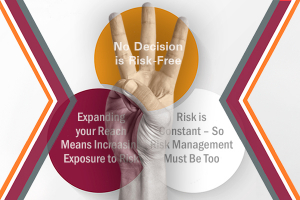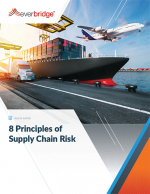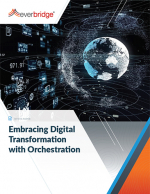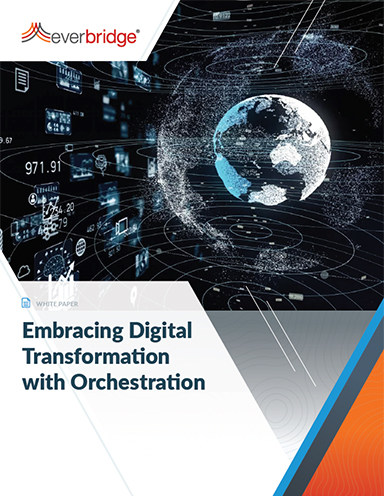Embracing Digital Transformation with Orchestration
In this educational white paper, we discuss what makes adopting digital transformation so difficult, and how the first step to answering the question is understanding the top barriers and challenges.
Embracing Digital Transformation
Major technological advancements have altered the way people do business throughout history. Past examples of these technological revolutions include the industrial revolution, steel and electricity, mass production, and information technology. The latest major advancement is digital transformation.
Digital Transformation
Digital transformation drives modern IT initiatives such as cloud migration, AI and Analytics, and tools consolidation; all of these are underpinned by orchestration.
Digital Transformation is not a completely new phenomenon; it has been pushed to the center stage by the COVID-19 pandemic and the resulting hybrid work environment.
In turn, companies understand the importance of IT and the current transformational period to having a strategic advantage in the market.
According to Andy Roswell-Jones, VP at Gartner, “The conditions for a digital arms race have emerged, making it imperative for CIOs to accelerate their digital initiatives now”.
Challenges to Adopting Digital Transformation
What makes adopting Digital Transformation so difficult? The first step to answering that question is understanding the top barriers and challenges.
According to a Gartner CIO survey regarding top barriers, top challenges include insufficient funding and budgets to pay for digitization efforts (52%), technology challenges blocking change (50%), and insufficient depth/breadth of digital skills (44%).
Automation and orchestration are amongst the most impactful capabilities that allow organizations to accelerate digital transformation and gain an upper hand in the emerging “digital arms race,” yet many organizations feel they are out of reach.
Critical Event Management Can Help
Despite process and IT automation being a key catalyst that drives transformation efforts, this does not replace the human element.
Ultimately people still need to make decisions, approvals, and sign-offs that cannot be fully replaced, but drastically improved by orchestration and automation. This results in orchestration also becoming a foundational pillar of Critical Event Management alongside communication and collaboration.
Download the White Paper and discover how by using a Critical Event Management platform that uses orchestration and automation, companies are able to operate more efficiently, provide outstanding digital experiences to their employees and customers, and respond to IT threats and disruptions faster.
What’s Related




Favorites





